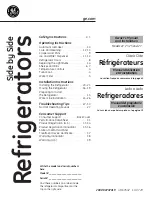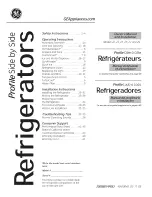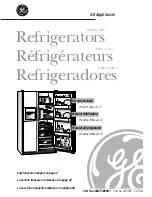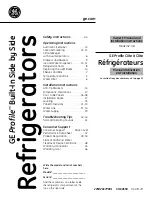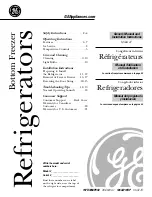
Solutions to problems
Condensation outside the refrigerator
According to international standard
ISO8187, domestic refrigerators,
freezers and refrigerator/freezers should
not present condensation outside.
However, when installed in areas with
relative humidity above 80% and room
temperatures above 32°C (89.6°F), it is
normal for the refrigerator to have some
outside condensation (moisture).
Door seals
When the door(s) are closed, an internal
vacuum forms. This can make it difficult
to open the door. We recommend
waiting a few seconds before reopening
it/them.
Normal operating noises
When the refrigerator is turned on and
off, it may make a clicking noise that is
perfectly normal. This is the thermostat
going off and on. (temperature control).
While the refrigerator is running, it may
make a "screech", especially when the
door is open.
This noise is due to the expansion of the
cooling fluid inside the refrigerator. It
does not mean there is a problem with
the appliance.
Due to the door's sealing system, noises
and clicks may be heard when closing
the door. This is the result of the sudden
cooling of inside air.
The compressor may make a noise or a
pulsing sound. This is a characteristic of
modern compressors that operate at
higher speeds than older models.
Contraction and dilatation of inside
components, due to temperature
variations, can cause soft clicking noises
in the refrigerator.
Warmth near the doors
It is normal for the area near the door
and sides to present higher
temperatures. The warmth prevents
moisture formation.
Warmth near the back
It is normal for this area to present
higher temperatures, since this is where
the cooling fluid circulates at higher
temperatures. Avoid contact with this
part of the refrigerator.
Normal operation
01. It takes a few minutes for the
refrigerator compartments to cool
when the unit is turned on: If the
temperature of one of the
compartments is higher, when the
unit is turned on, it will take a few
moments for it to drop.
02. The compressor surface is heating
up: It is normal for the compressor
surface to heat up when it is
operating properly. You should not
touch it.
E
N
G
E
N
G
43
44



















